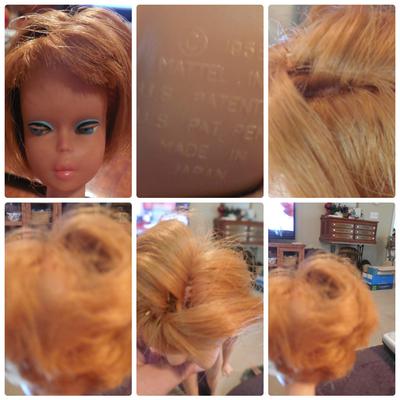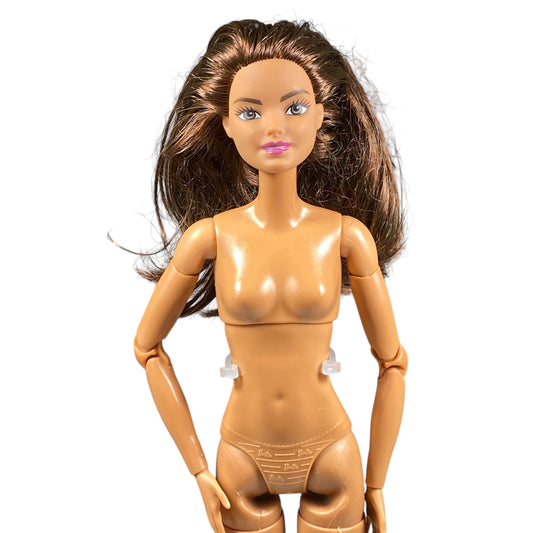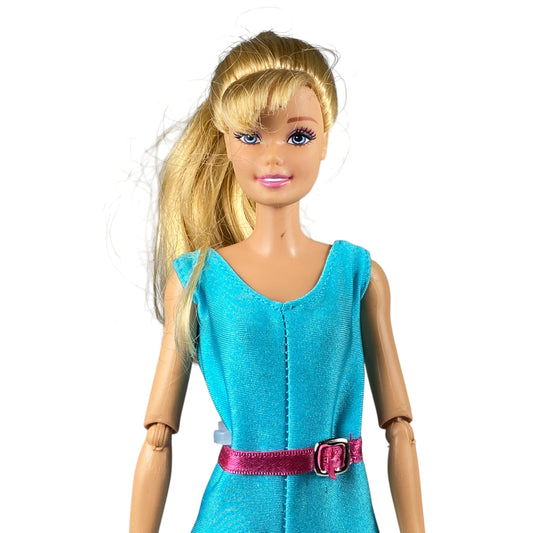How to Spot Authentic Vintage Barbie Dolls vs. Counterfeits: The Ultimate Collector's Guide
Share
 Discover the telltale signs of genuine vintage Barbie dolls with our comprehensive authentication guide. Learn to identify markings, physical features, and manufacturing details that separate valuable collectibles from modern reproductions.
Discover the telltale signs of genuine vintage Barbie dolls with our comprehensive authentication guide. Learn to identify markings, physical features, and manufacturing details that separate valuable collectibles from modern reproductions.
Introduction
The thrill of discovering a vintage Barbie doll can quickly turn to disappointment if that treasure turns out to be a reproduction or counterfeit. How to spot authentic vintage Barbie dolls vs. counterfeits is essential knowledge in today's collecting world, where original dolls from the late 1950s and 1960s can command thousands of dollars. Whether you're a seasoned collector or just beginning your vintage Barbie journey, this comprehensive guide will equip you with expert techniques to authenticate these iconic dolls, protect your investment, and build a collection you can trust.
What is "How to Spot Authentic Vintage Barbie Dolls vs. Counterfeits"?
Authentication of vintage Barbie dolls involves a methodical examination process to determine if a doll is genuinely from its purported era. This process requires knowledge of specific markers, manufacturing techniques, and physical characteristics that differentiate original vintage Barbies from later reproductions or counterfeits.
Many collectors struggle with questions like:
- "Is this really a 1959 #1 Barbie?"
- "Does this copyright date mean it's vintage?"
- "Why does this doll with vintage markings look too new?"
These questions highlight the complexity of authentication, as Mattel has reused molds and copyright dates across decades of production.
The identification process involves examining multiple factors simultaneously, including body markings, facial features, limb construction, and even the materials used. No single characteristic alone is usually definitive – it's the combination of features that confirms authenticity.
Why is "How to Spot Authentic Vintage Barbie Dolls vs. Counterfeits" Important?
Understanding how to authenticate vintage Barbie dolls is crucial for several compelling reasons:
- Value Protection: Original vintage Barbie dolls, especially those from 1959-1966, can be worth significant amounts. A genuine #1 Barbie from 1959 in excellent condition can fetch thousands of dollars, while a reproduction might be worth only a fraction of that amount.
- Collection Integrity: Serious collectors pride themselves on building authentic collections that truly represent Barbie's history and evolution.
- Historical Significance: Authentic vintage Barbies are pieces of cultural history, representing changing fashions, societal values, and manufacturing techniques of their era.
- Investment Protection: For those who collect for investment purposes, authentication skills are essential to avoid costly mistakes.
Without proper authentication knowledge, collectors risk overpaying for reproductions or missing opportunities to acquire genuine vintage pieces at fair prices.
Top Benefits of Knowing How to Spot Authentic Vintage Barbie Dolls vs. Counterfeits
Being able to distinguish authentic vintage Barbie dolls from counterfeits offers numerous advantages:
- Financial Protection: Save thousands of dollars by avoiding expensive counterfeits marketed as originals. Authentication knowledge ensures you pay appropriate prices for what you're actually getting.
- Enhanced Collecting Confidence: Shop with assurance at estate sales, flea markets, online marketplaces, and even specialty dealers, knowing you can verify authenticity independently.
- Better Negotiating Position: When you can confidently identify a doll's true age and authenticity, you're in a stronger position to negotiate fair prices or identify overpriced items.
- Community Respect: Within collecting communities, those with authentication expertise are valued and respected for their knowledge and ability to help others avoid costly mistakes.
- Preservation of History: By identifying and properly caring for authentic vintage pieces, you contribute to preserving an important part of toy and cultural history for future generations.
How to Choose/Get Started with "How to Spot Authentic Vintage Barbie Dolls vs. Counterfeits"
Examine Body Markings
The markings on a Barbie doll's body provide crucial authentication information:
- Buttocks Markings: Authentic vintage Barbies have specific markings on their right buttock. These typically include copyright dates, "Mattel, Inc." and country of manufacture. The markings' content and format evolved over time, making them useful for dating dolls.
- Copyright Dates: One major point of confusion is that the copyright date doesn't necessarily indicate the manufacturing year. Many dolls stamped "©1966" were actually manufactured in the 1980s and 1990s. True vintage dolls with 1966 markings would typically have been made in Japan in the late 1960s or early 1970s.
-
Country of Manufacture:
- Japan: Early vintage dolls (late 1960s/early 1970s)
- Taiwan or Hong Kong: Some vintage dolls
- Mexico, China, Malaysia: Post-1972 manufacturing (not vintage)
- Patent Information: Vintage dolls typically have "U.S. Patented" or "U.S.Pat. Pend." markings, while modern dolls with vintage copyright dates often show "U.S. & Foreign Patented/Other Pats Pending".

Check Physical Characteristics
Several physical features help identify authentic vintage Barbies:
- Foot Construction: The very first Barbie (#1) from 1959 has hollow feet with small tubes inside them, designed to attach to their original stands. Later vintage models have solid feet.
-
Facial Features:
- #1 Barbie (1959): Very pale complexion, black and white eyes (no blue), and distinctively pointy eyebrows in an upside-down V shape.
- Later vintage models: Softer eyebrow shapes, different eye colors and makeup.
- Rooted Eyelashes: Some vintage dolls like the 1960s TNT Barbie have distinctive rooted eyelashes, which can help with identification.
- Limb Construction: Vintage dolls often have bendable limbs with specific construction methods that differ from modern reproductions.
Look for Distinguishing Details
- Original Tags: If present, ankle or neck paper tags can help authenticate dolls made after 1963.
- Head Markings: Check the back of the doll's head for manufacturer markings. Mattel markings indicate a genuine Barbie (vs. other brands like Disney).
Special Case: Identifying #1 Barbie (1959):
- Hollow feet with tubes for stand attachment
- Extremely pale complexion
- Distinctive pointy eyebrows in an upside-down V shape
- Black and white eyes (no blue)
- Copper tubes in legs
- Separated fingers on hands
Common Mistakes or Challenges Related to "How to Spot Authentic Vintage Barbie Dolls vs. Counterfeits"
Even experienced collectors can fall victim to these common authentication pitfalls:
1. Assuming Copyright Date Equals Manufacturing Date
Perhaps the most common mistake is assuming a doll with "©1966" was made in 1966. Many dolls with this marking were manufactured decades later, significantly affecting their value and collectibility.
2. Focusing on Just One Feature
Authentication requires examining multiple characteristics together. No single feature guarantees authenticity, as reproductions may correctly replicate some elements while missing others.
3. Overlooking Country of Manufacture
Where a doll was made provides crucial dating information. Dolls made in Mexico, China, or Malaysia with vintage copyright dates are not actually vintage.
4. Falling for "Too Good to Be True" Offers
Especially in online marketplaces, extremely low-priced "vintage" Barbies are often reproductions or counterfeits. As one search result noted, suspicious listings with stolen photos from authentic doll sales are common.
Conclusion
Mastering how to spot authentic vintage Barbie dolls vs. counterfeits is both an art and a science, requiring attention to detail and knowledge of Barbie's manufacturing evolution. By examining body markings, physical characteristics, manufacturing locations, and other distinguishing features, collectors can confidently authenticate these iconic dolls.
Whether you're seeking to build a museum-quality collection, protect an investment, or simply enjoy the history of these cultural icons, authentication skills are invaluable. Remember that no single characteristic definitively proves authenticity – it's the combination of correct features that confirms you have a genuine piece of Barbie history.





